Let’s learn: stuck describing someone with just “nice” or “tall / short”? Let’s fix that! This lesson will teach you useful adjectives for a physical appearance — covering general appearance, age, build, height, and facial features — to help you sound more natural and confident.
But first let’s revise body parts that you learned in grade 2:
But first let’s revise body parts that you learned in grade 2:
Now you are prepared to learn some words. Let's start with general appearance.
Word bank:
She is a beautiful woman with a warm smile and kind eyes.
He’s an attractive man with a confident smile.
She looked very pretty in her summer dress.
He’s a good—looking actor that everyone admires.
He looked very handsome in his suit at the wedding.
He thought the monster in the story was really ugly.
general appearance — means how someone or something looks overall including things like hair, clothes, posture, and cleanliness. It's a way to describe the first impression someone gives based on their looks; vispārīgs raksturojums, parasti pirmais iespaids
From her general appearance, you could tell she takes good care of herself.
beautiful — [ˈbjuː.tɪ.fəl] — a word used to describe someone (usually a woman or girl) who is very attractive in appearance; skaista (parasti par sieviešu dzimumu)
She is a beautiful woman with a warm smile and kind eyes.
attractive — [əˈtræk.tɪv] — a person who looks nice or pleasant and catches people’s attention in a positive way. This word can describe both men and women; pievilcīgs (par abiem dzimumiem)
He’s an attractive man with a confident smile.
pretty — [ˈprɪt.i] — a word used to describe someone (usually a girl or woman) who looks nice in a soft, delicate, or sweet way. “Pretty” is not as strong as “beautiful,” but it still means someone is nice to look at. It’s often used to describe a friendly, gentle kind of beauty; jauks (lielākoties par sieviešu dzimumu)
She looked very pretty in her summer dress.
good—looking — [ˌɡʊdˈlʊk.ɪŋ] — a person who is physically attractive. This word can describe both men and women. “Good—looking” is a neutral and polite way to say someone is attractive. It works well in both formal and informal situations; glīts(a), izskatīgs(a) (par abiem dzimumiem)
He’s a good—looking actor that everyone admires.
handsome — [ˈhæn.səm] — a word used to describe a man who is good-looking in a strong, neat, or traditionally attractive way; glīts, izskatīgs (par vīrieti)
He looked very handsome in his suit at the wedding.
ugly — [ˈʌɡ.li] — a word used to describe someone or something that looks very unpleasant or not nice to look at. “Ugly” is very strong and often hurtful word, especially when used about people. It’s better to avoid this word and use softer phrases like "not very attractive" when speaking politely or kindly; neglīts (jāuzmanās, lietojot šo vārdu, jo tas lielākoties ir aizvainojošs, ar negatīvu nozīmi vārds)
He thought the monster in the story was really ugly.
Let's move to the next aspect: age. You learned about this topic in the previous theoretical chapters of grade 7. Revise here:
Let's look at some more vocabulary! We can talk about the person's age in various ways. Let's start by watching a video: How to talk about ages in English
Here are the stages of life from the video plus some more:
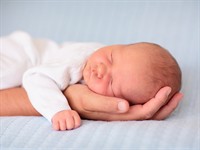
newborn — [ˈnjuː.bɔːn] — a baby who has just been born. Usually, we call a baby a newborn during the first few weeks of life; jaundzimušais
The newborn was sleeping peacefully in her mother’s arms.
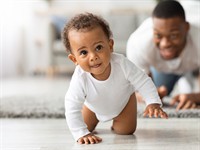
baby — [ˈbeɪ.bi] — a very young child. A baby is older than a newborn, but still not able to walk or talk much. Usually, we call children "babies" from birth until about one year old; mazulis (vecumā no dzimšanas līdz aptuveni viena gada vecumam)
He held the baby gently in his arms.
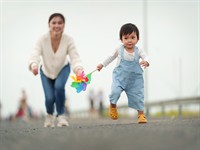
toddler — [ˈtɒd.lər] — a young child who is learning to walk. This stage is usually from about 1 to 3 years old. The word comes from the way they walk — they often “toddle,” or walk unsteadily; bērns, kurš mācās staigāt
The toddler is learning to walk and talk.
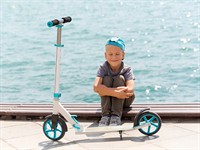
child — [tʃaɪld] — a young person who is older than a baby or toddler but younger than a teenager. Children usually start school and begin to learn many new things. A child is usually between 3 and 12 years old; bērns (aptuveni vecumā no 3-12 gadiem)
This child likes to ride his scooter.
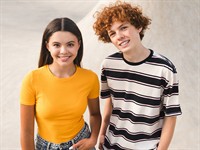
teenager — [ˈtiːnˌeɪ.dʒər] — a young person between the ages of 13 and 17. The word comes from the numbers that end in “-teen” (like thirteen, fourteen, etc.); pusaudzis (vecumā no 13-17 gadiem)
Teenagers are not children anymore, but they are not yet adults; pusaudzis(e)
teen — [tiːn] — a short, informal way to say teenager — someone who is between 13 and 19 years old. It’s often used in everyday conversation; pusaudzis (lieto sarunvalodā, ikdienas situācijās)
The new movie is very popular among teens.

young adult — [ˌjʌŋ ˈæd.ʌlt] — a person who is no longer a teenager, but still at the beginning of adult life. This usually means someone between the ages of 18 and 25. They may study at university, start working, or live on their own for the first time; jaunais pieaugušais (aptuveni vecumā no 18-25 gadiem)
As a young adult, she moved to a new city to start university.

middle—aged — [ˌmɪd.əlˈeɪdʒd] — someone who is no longer young, but not yet old. This usually means someone between the ages of 40 and 60. People at this stage often have families and long-term jobs; pusmūža (aptuveni vecumā no 40 līdz 60 gadiem)
The middle-aged woman has short blond hair and she wears stylish glasses.

elderly — [ˈel.dəl.i] — polite and respectful word to describe someone who is old, usually 65 years or older. "Elderly" is more polite, gentle, and formal. "Old" can sound too direct or rude when talking about people; pavecs, labi gados (parasti 65 gadi un vairāk)
The bus has special seats for elderly passengers.
You know that we can talk about the exact age in the following way: "He is 20 (years old)." Sometimes there can be a situation when we do not know the exact age, but we can guess. You saw the phrases in the video. Let's sum them up:
In his/her 20s, 30s, etc. — this means the person is between 20 and 29 years old, or 30 and 39, and so on; ap (ar nozīmi — aptuveni)
She is in her 20s. (She is between 20 — 29 years old.); Viņai ir ap 20 (gadiem).
He is in his 40s. (He is between 40 — 49 years old.); Viņam ir ap 40 (gadiem)
We can be even more specific using:
early — [ˈɜː.li] — around 20 — 23 years old and so on; nedaudz pāri
She is in her early 30s. (= she is 30 — 33); Viņai ir nedaudz pāri 30 (gadiem)
mid — [mɪd] — around 24 — 26 years old and so on; pa vidu, ap (ar nozīmi — aptuveni)
He is in his mid 40s. (= He is 44 — 46); Viņam ir ap 45 (gadiem)
late — [leɪt] — around 27 — 29 years old and so on; gandrīz + nākamais gadu desmits
They’re in their late 50s. (= they are 57 — 59.); Viņiem ir gandrīz 60 (gadi)
What is that —s ending to the age? It refers to the decade.
decade — [ˈdek.eɪd] — a period of 10 years; dekāde (10 gadu periods)
She has been living in this city for over a decade.
Svarīgi!
We form decade numbers by using the tens digit of a number and adding -s to show a range of ten years (e.g. 20s, 30s, 40s). The written form of these is: 20s – twenties; 30s – thirties; 40s – forties; 50s – fifties; 60s – sixties; 70s – seventies; 80s – eighties; 90s – nineties; 100s – hundreds.
Let's move on to the next aspect: height. Nothing complicated here. Just three simple words to describe how tall a person is.
Word bank:
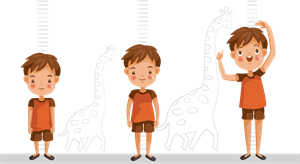
short — [ʃɔːt] — a person who is not tall; someone with less height than most others; īss(a), neliela auguma
He’s too short to reach the top shelf without help.
average — [ˈæv.ər.ɪdʒ] — a person who is not tall and not short — somewhere in the middle. This is a neutral and polite way to describe someone’s height when it’s not extreme. You can also say medium height, especially in informal speech; vidēja auguma
My brother is of average height, but he always wears shoes that make him look taller.
tall — [tɔːl] — a person who has more height than most other people. Tall” is used in a positive or neutral way; garš(a)
He is very tall, so he plays basketball.
We have covered the main general things — appearance, age and height. Now it is time for specifics. Next aspect: body type. Body type means the general shape of a person's body. People have different body types: some are slim, some are chubby. It just describes how someone looks on the outside — not how healthy or strong they are. Everyone’s body is different, and that’s perfectly okay! It is a sensitive topic, so be careful as you can make somebody feel bad by using the inappropriate word.
Word bank:
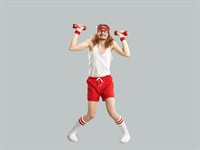
thin — [θɪn] — with little flesh on the bones; It can sound neutral or even a little negative, especially if someone looks unhealthy; vājš / tievs, bet var būt ar negatīvu nozīmi, ja cilvēks izskatās neveselīgi tievs
Some people are naturally thin and don’t gain weight easily.

slim — [slɪm] — attractively thin.“Slim” is a positive word. It means someone is thin in a way that looks healthy and well-shaped. It’s often used to compliment someone’s figure; slaids(a)
She is slim because she eats well and stays active.

average build — [ˈæv.ər.ɪdʒ bɪld] — a person whose body is neither thin nor overweight, just typical or medium in size.
The suspect was of average build and about 1.75 meters tall.
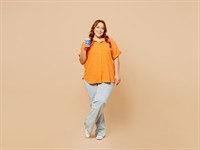
chubby — [ˈtʃʌb.i] — fat in a pleasant and attractive way; apaļīgs, tukls (pozitīvā nozīmē)
She’s a bit chubby, but has great posture.
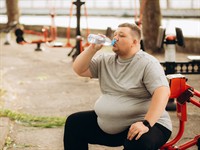
fat — [fæt] — a person has a lot of body weight or extra body fat. It is often used to describe someone who is much heavier than average. The word fat is pretty rude, hurtful, so it's better to use kinder words like the one you already know: "chubby" (softer and more polite); resns (negatīva nozīme, var būt aizskaroši cilvēkam)
He used to be very fat as a child, but now he exercises and feels healthier.
When describing a person, we can talk about the face shape to give a clearer picture of how they look.
Word bank:
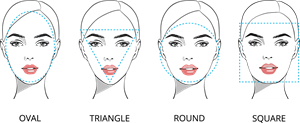
oval — [ˈəʊ.vəl] — an oval face is shaped like an egg. It’s slightly longer than it is wide, with a rounded jaw and balanced proportions. The forehead is a bit wider than the chin, and the overall shape is smooth and symmetrical; ovāla sejas forma
She has a classic oval face that suits any hairstyle.
triangle — [ˈtraɪ.æŋ.ɡəl] — a triangle face is a face that is wide at the bottom (the jaw) and narrow at the top (the forehead). It looks a bit like an upside-down triangle; trijstūrveida sejas forma
People with triangle faces often look better with hairstyles that add volume at the top.
round — [raʊnd] — when we describe a person as having a round face, it means their face has a circular shape. The width and length are almost the same, and the face has soft, curved lines without sharp angles; apaļa sejas forma
His round face makes him look younger than he is.
square — [skweər] — a square face means the person’s face has a strong, straight shape, with the forehead, cheeks, and jawline nearly the same width. The jawline is usually wide and well-defined, giving the face a more angular or box-like appearance; kvadrātveida sejas forma
Her square face gives her a strong, confident look.
You can describe the colour of eyes using the colour names you already know; for example — brown, blue, green, gray, etc. Here are some other words you can use to make the description more specific.
Word bank:
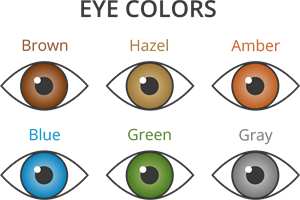
light — [laɪt] — when we say something is light in colour, we mean it is not dark. It has a soft, pale, or gentle shade of a colour. In the context of eyes, hair, or skin, light means the colour looks bright or soft, not deep or strong; gaišs
She has light green eyes that look almost grey.
dark — [dɑːk] — when something is described as dark, it means the colour is deep, strong, or rich, not light or pale. In physical appearance, dark is used to talk about eyes, hair, or skin that have a deep tone or shade; tumšs
His dark brown eyes made him look very serious and calm.
pale — [peɪl] — when we say someone has pale eyes, it means their eye colour is very light or soft, with little colour intensity. It does not mean sick or tired in this case it simply describes a light version of a colour; blāvs, gaišs
She has pale blue eyes that look almost grey in some light.
hazel — [ˈheɪ.zəl] — hazel eyes have a mix of colours, usually green, brown, and sometimes gold. The colour can change slightly in different lighting or depending on what the person is wearing. Hazel eyes are considered rare and unique, because they don’t look just one colour; gaišbrūns
She has beautiful hazel eyes that look green in the sunlight.
amber — [ˈæm.bər] — amber eyes are a rare eye colour with a golden-yellow or coppery tone. They often appear bright, warm, and sometimes a little orange or honey-like. Unlike hazel eyes (which mix green and brown), amber eyes are usually a solid golden colour without green; dzintara krāsa
His amber eyes made him look mysterious and unique.
golden — [ˈɡəʊl.dən] — golden eyes have a warm yellowish tone, similar to gold or honey. This colour is often seen as part of other eye colours, like amber, hazel, or even green; zeltains
Amber eyes often look golden in strong light.
deep — [diːp] — when we describe eyes as deep, we mean the colour is strong, rich, and intense. It’s not pale or light. Deep eyes often look serious, emotional, or thoughtful, and the word also suggests depth of feeling or mystery; dziļas (piemēram, “deep green” - dziļi zaļas)
His deep eyes make him look very thoughtful.
There are different shapes and sizes of the eye, but here you have the most common ones.
Word bank:
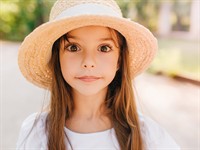
Her big eyes make her look younger than she is.
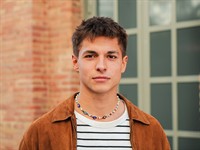
He has small green eyes that seem to notice everything.
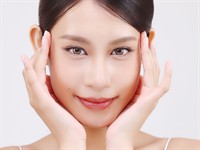
She has beautiful monolid eyes that give her a unique and elegant look.

big (also: round) — [bɪɡ] — when someone has big eyes, it means their eyes are larger than average in size, making them look more open, expressive, or noticeable. This is often seen as a positive or attractive feature; lielas acis
Her big eyes make her look younger than she is.

small — [smɔːl] — when someone has small eyes, it means their eyes are smaller than average in size or less open—looking; mazas acis
He has small green eyes that seem to notice everything.

monolid — [ˈmɒn.ə.lɪd] — a type of eye shape where the eyes often look narrow and smooth. This shape is common in many Asian people and is just one of the many natural eye shapes; šauras acis
She has beautiful monolid eyes that give her a unique and elegant look.
Hair length is an important part of a person’s appearance and helps us describe how someone looks.
Word bank:

short — [ʃɔːt] — when someone has short hair, it means their hair is cut close to the head. It usually ends above the ears or around the chin; īsi mati
I like short hair because it’s easy to wash and dry.
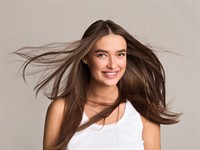
long — [lɒŋ] — when someone has long hair, it means their hair goes past the shoulders, sometimes reaching the chest, back, or even waist; gari mati
I’ve always wanted long hair, but it takes a long time to grow.
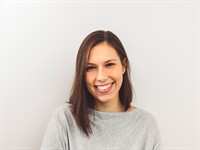
shoulder length (also: medium length) — [ˈʃəʊl.dər leŋθ] — hair that reaches the shoulders. It is not very short or very long — it’s in the middle. The ends of the hair usually touch or rest on the shoulders; līdz pleciem
She has shoulder length brown hair that she wears in a ponytail.
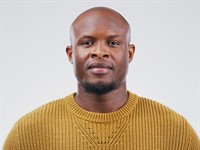
bald — [bɔːld] — having no hair on the head (or having lost most or all of it). Some people are naturally bald, while others lose their hair over time; plikpaurains, bez matiem
My grandfather is bald, but he still looks great.
From bright blond to deep black, hair colour adds personality and helps us give a more complete description of someone. You can use basic colour words, such as brown, black, red, to describe a person’s hair. However, there are some specific words which you are going to learn now!
Word bank:
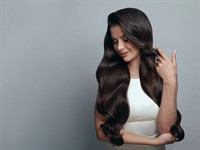
dark — [dɑːk] — when we say someone has dark hair, we mean their hair is rich and deep in colour, often characterized by a deep brown color; tumšs
Many people in Spain have naturally dark hair. (= in general)
She has dark brown hair that shines in the sun. (= together with a specific colour)
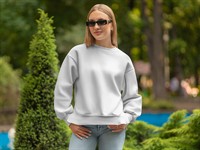
fair — [feər] — very light in colour, usually a pale yellow, very light brown, or golden shade; gaišs
Many children are born with fair hair that darkens later.
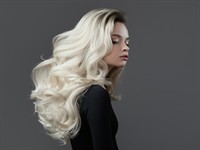
blond (also: blonde) — [blɒnd] — a light yellow or golden colour; blonds
She has long blond hair and blue eyes.
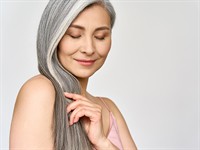
grey (also: gray, gray-haired (AmE*)) — [ɡreɪ] — hair that appears silver, grey, or white. It usually happens naturally with age, when the hair loses its original colour; sirms
She started getting grey hair in her 30s. (BrE**)
The gray-haired man shared stories of his youth with the children. (AmE)
*American English - the English language as spoken in the U.S.
**British English - the English language as it is spoken and written in the UK and certain other places around the world, like Canada, Australia, Europe, some parts of Africa, etc.)
*American English - the English language as spoken in the U.S.
**British English - the English language as it is spoken and written in the UK and certain other places around the world, like Canada, Australia, Europe, some parts of Africa, etc.)
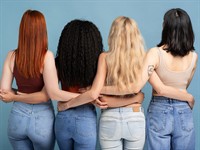
natural— [ˈnætʃ.ər.əl] — means hair that has not been dyed, bleached, or chemically changed. It is the person’s original, real hair colour — the colour they were born with or that has grown naturally; dabisks
Her natural hair is dark brown, but she often dyes it red.

dyed — [daɪd] — means the hair has been changed to a different colour using artificial colouring products. It is not the person’s natural hair colour; krāsots
Her hair looks natural, but it’s actually dyed.
Hair can look and feel different for everyone, and the way people wear it says a lot about their personal style — that's why we include hair type and hairstyle when describing someone.
Word bank:
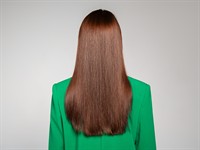
straight — [streɪt] — the hair grows down without waves or curls. It looks smooth and flat; taisns
Her long, straight hair shone like silk in the sunlight as she rode her bike down the hill, laughing all the way.
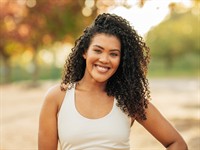
curly — [ˈkɜː.li] — curly hair means the hair forms tight or loose spirals or rings. It looks bouncy and full of shape; sprogains
The woman’s curly hair looked like a crown of soft spirals, catching the wind as she walked confidently through the busy street.
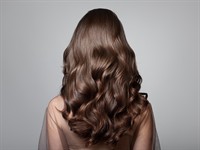
wavy — [ˈweɪ.vi] — the hair forms gentle, flowing waves. It’s not straight, but also not tightly curled — it falls in soft curves; viļņains
Her wavy hair danced around her shoulders like ocean waves as she ran along the beach, laughing with joy.
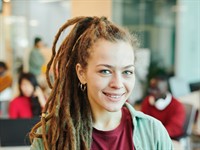
dreadlocks (also informal dreads) — [ˈdred.lɒks] — a hairstyle where the hair is twisted and locked into long, rope — like strands. This style has deep cultural roots and is often worn as a form of self — expression and tradition; dredi
Her long dreadlocks swayed like ropes of strength and beauty as she moved to the rhythm of the drums.
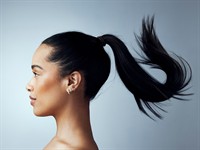
ponytail — [ˈpəʊ.ni.teɪl] — a hairstyle where all or most of the hair is pulled back and tied together at the back of the head so it hangs down like a tail; zirgaste (matu sakārtojums)
She wore her hair in a ponytail for school.
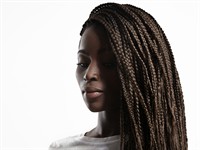
African braids — [ˈæf.rɪ.kən] — a hairstyle made by weaving the hair into many small, tight braids, often close to the scalp. This style is traditional in many African cultures and can last for a long time; āfrikāņu bizītes
She got beautiful African braids for the summer holidays.
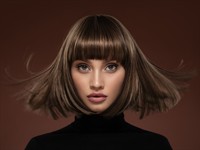
fringe (bangs - AmE) — [frɪndʒ] — an area of hair hanging over the forehead (= part of the face above the eyes) that is cut shorter than the rest of the hair; ponijs, pieres mati
She got a new haircut with a fringe, and it looks really cute!
When describing someone’s face, the shape of the nose can be an important feature that makes them unique.
Word bank:
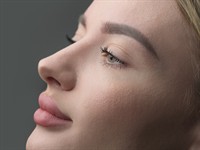
straight — [streɪt] — a nose that doesn’t curve or bend; it goes in a smooth line from the top to the tip; taisns
He has a straight nose, which gives his face a balanced look.
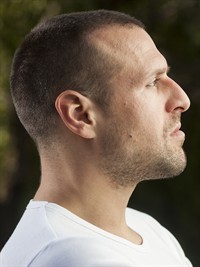
hooked — [hʊkt] — a nose that curves downward at the tip, a bit like the shape of a hook; līks
The old man had a long, hooked nose that gave him a very serious look.
Lips come in many different shapes and sizes, and they play a big role in how we describe a person’s face and expression.
Word bank:
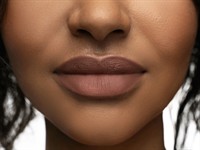
full — [fʊl] — lips that are round, plump, and soft-looking, especially the top and bottom lips being quite thick; pilnīgs
She has full lips that look naturally beautiful.

thin — [θɪn] — lips that are narrow and not very thick, especially the top or bottom lip; šaurs
He has thin lips that make his smile look gentle and calm.
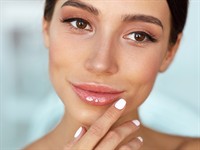
wide — [waɪd] — lips that are long from one side to the other, often making the smile look big or expressive; plats
Her wide lips stretched into a big smile that lit up the whole room.
Some people have special features that make their appearance unique and more memorable, adding personality to how they look.
Word bank:
Word bank:

moustache — [məˈstɑːʃ] — hair that grows on the upper lip, just below the nose. Some people grow and shape it in different styles; ūsas
My grandfather has a thick moustache that he trims every week.
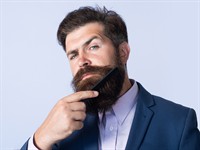
beard — [bɪəd] — hair that grows on the chin, cheeks, and jaw. It can be short or long, neat or bushy; bārda
The man with the beard looked like a friendly teacher from a fairy tale.
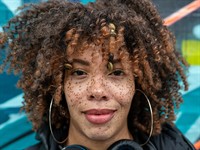
freckle — [ˈfrek.əl] — a small, light brown spot on the skin, usually caused by the sun. Freckles often appear on the face, especially the nose and cheeks; vasaras raibums
She has cute freckles across her nose that show up more in summer.
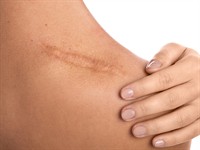
scar — [skɑːr] — a mark left on the skin after a cut, burn, or injury has healed. It can be small or large, and it may stay forever; rēta
He has a small scar on his knee from when he fell off his bike as a child.

dimple — [ˈdɪm.pəl] — a small, natural hollow or dent in the cheek that appears when someone smiles; vaigu bedrīte
Her dimples make her smile look extra sweet and friendly.
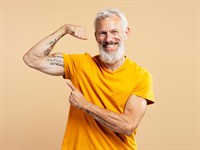
tattoo — [təˈtuː] — a picture, word, or design that is permanently inked into the skin. Tattoos are deeply connected to culture in many parts of the world. For some communities, tattoos are a symbol of identity, tradition, or life milestones — not just decoration; tetovējums
He has a tattoo on his arm.

piercing — [ˈpɪə.sɪŋ] — a small hole made in the body to wear jewelry, like earrings, nose rings, or studs. Piercings are often done on the ears, nose, eyebrows, lips, or belly button. Just like tattoos, piercings can be a fashion choice or part of a cultural or religious tradition; pīrsings
She got a new piercing in her nose and wears a tiny silver ring.
Even though this unit includes many words to describe physical appearance, you'll notice that some of them appear again and again — because they’re especially useful when talking about how someone looks.